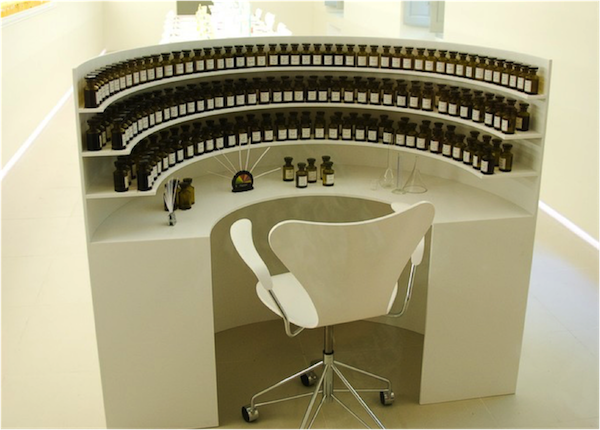How Flavors are Created

In an earlier post on flavor nomenclature, we touched on the confusion surrounding common sensory terminology. To a sensory scientist “flavor” refers to all tastes, aromas, mouthfeels and textures of a product. To a formulator, a flavor is a commercial ingredient that is a blend of volatile chemicals responsible for imparting the aroma of a product. In this post, we’ll focus on the formulator’s view, describing how these commercial “flavors” are created.
What is the Composition of Flavors?
Flavors are blends of aroma chemicals that are developed for specific end-use applications. The exact composition of flavors is proprietary – it’s the intellectual property of the flavor supplier (“flavor house”). The exact makeup of a flavor is vigorously protected as trade secrets, and not by patents.
This is common practice in the food industry, where the sales of popular brands can continue to grow for decades. It’s the secret recipe for Coca Cola that has enabled it to thrive since 1886 – despite technological advances that so far have not enabled competitors to replicate Coca-Cola’s unique flavor profile (and countless other foods and beverages). A patented cola flavor would have been exactly replicated many years ago.
Contrast this to the pharma industry, where patents are a company’s primary source of intellectual property. We all know what happens when the patents of blockbuster drugs expire!
Flavor Creation
A flavorist, also known as flavor chemist, is someone who uses chemistry to engineer artificial and natural flavors. Flavorists are highly-trained scientists who blend individual chemicals, reaction products and natural extracts to create a desired aroma.
There is limited academic education in flavor creation. That’s why most flavorists are analytical chemists, food scientists, or chemical engineers, who have garnered further on-the-job training and expertise. This path involves an additional 7-year apprenticeship, as well as oral testing similar to a thesis defense, to become an accredited member of the flavorist community.
A flavorist must be familiar with the chemistry of the flavor itself as well as that of the end product. Additionally, flavorists rely heavily on instrumental analysis of the flavors, typically involving use of multiple chromatographic techniques.
Along with scientific proficiency, this profession also requires a high degree of creativity, and it has been likened to an art form. As the flavor industry is highly specialized, and a long training phase is required before accreditation, there are only about 1,000 flavorists in the world.
Flavor Composition
In our last post, we discussed how flavors are subdivided by their source into four categories (link), Natural Flavors, Natural With Other Natural Flavors (WONF), Artificial Flavors, and Natural and Artificial (N&A) Flavors.
The flavorist has literally thousands of known aroma compounds at their disposal to blend and create a flavor for a specific end-use application. As we know, most flavors are comprised of many individual aroma compounds. But not every compound serves the same role, or is even essential to generate the desired flavor profile.
Aromatic Compounds
The individual aromatic compounds in a flavor fall into one of three classes:
- Impact Compounds
- Contributory Compounds
- Differential Compounds
Impact Compounds
Impact compounds are the individual aroma chemicals most representative of a flavor. That is, when smelled alone, these compounds would be reminiscent of the named flavor.
Impact compounds represent most of the organoleptic potency of the flavor type. They are characteristic, essential and necessary for the intended flavor profile.
For example, the impact compound of Concord grape is methyl anthranilate. However, methyl anthranilate by itself is “perfumey”, “solventy”, and artificially unidimensional in character – not at all representative of the flavor profile of a natural Concord grape.
Contributory Compounds
Contributory compounds enhance the complexity and identity of the named flavor. They are not necessarily reminiscent of the named flavor. However, when used in conjunction with an impact compound, contributory compounds bring the aroma closer to the named flavor (for example, adding characteristics that produce a “juicier” berry, or a “greener” apple). Contributory compounds turn an aroma that is reminiscent of an air freshener into a palatable food.
Differential Compounds
A flavor house may have tens of thousands of aroma formulas to serve the food and fragrance market. For each flavor type (e.g. orange, strawberry, vanilla), the flavor house may have hundreds of formulations of each for different applications – dairy, beverage, processed food, drug. The composition of each is specifically formulated with unique combinations of differential compounds to “tweak” the desired flavor profile in the customer’s product. This is no small challenge, given the diversity of composition of base formulations, processing conditions and requirements for physical, chemical and microbiologic stability.
Coming Next: We will dive deeper into the chemical structure of aroma molecules.
Taste Masking Challenge? Senopsys Can Help!
Are you faced with the need to develop a palatable drug product to support clinical trials or commercial development? Our scientists are expert in both taste assessment and taste masking.
We use our experienced GCP-compliant taste panels and analytic tools to quantify the taste masking challenge and guide formulation development. And we apply a structured, sensory-directed development approach pioneered in the food industry to create palatable, taste-masked drug formulations for liquids, powders and solids.

